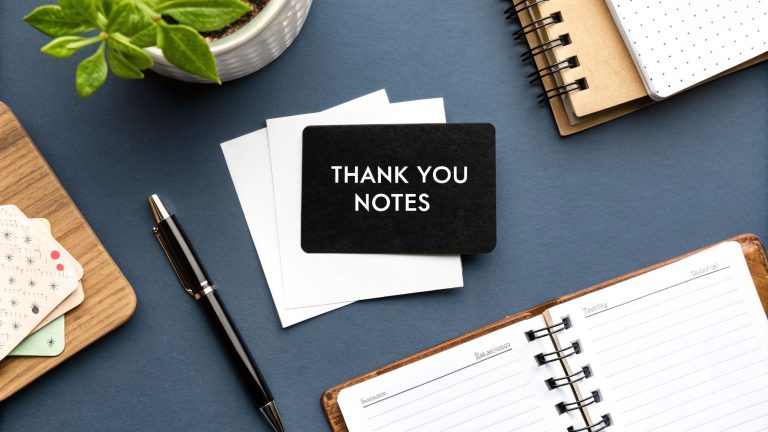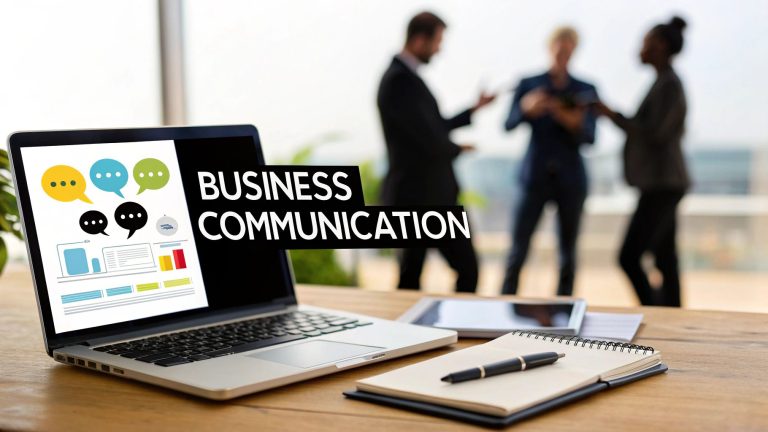The Do’s of Letters
Formal vs. Informal Letters
Let’s talk about the nuts and bolts of writing letters because knowing the difference between formal and informal letters is super handy for getting your point across.
When you’re sending a formal letter, you’re sticking to a script. This type of letter isn’t for sharing your weekend antics—it’s strictly business. Think job applications, official complaints, or business inquiries. You slap on those addresses (both yours and theirs), throw in a polite “Dear” at the start, and wrap it up with a formal goodbye. No emojis here, folks. Crisp and professional all the way. As our ultimate guide says, your letter should have:
- An official hello.
- A short and snappy intro.
- Details split over a few paragraphs.
- A wrap-up before you sign off.
- A signature using standard ink colors—blue or black.
Now, informal letters? They’re the opposite of formal. These are your go-to letters for friends, family, or folks you know well. Feel free to throw in some personal news, congrats, or even a casual invite. The structure is loose, and your tone is as relaxed as Sunday morning.
Structuring Your Letters
Whether you’re writing to impress a CEO or just dropping a line to Aunt Sally, having a clear layout makes all the difference.
Formal Letters
Stick to the playbook when writing formal ones, as Grammarly outlines:
- Your Address: Top right corner’s home.
- Date: Below your address.
- Their Address: On the left, down from your info.
- Formal Hello: “Dear [Title] [Last Name],”.
- Body Content:
- Intro: What’s the letter about?
- Details: Break info into chunks.
- Conclusion: Recap and maybe a thank you.
Bye and Signature:
- Use “Sincerely” or “Regards”.
- Your John Hancock in blue or black ink.
Informal Letters
A more chill vibe here, but having a guide helps:
- Your Address: Up top.
- Date: Under your address.
- Hello: Go with “Dear [First Name],”.
- Body Content:
- Kick-off: A friendly start.
- Details: Spill your news in sections.
- Wrap-up: End with a cheerful note.
Farewell and Sign-off:
- Use “Best regards”, “Take care”, or whatever feels right.
- Your name with a personal touch.
Here’s a quick look at how they stack up:
| Components | Formal Letter | Informal Letter |
|---|---|---|
| Tone | Business-like, straight to the point | Chatty, personal |
| Hello | “Dear [Title] [Last Name],” | “Dear [First Name],” |
| Blueprint | Your Address, Date, Their Address, Hello, Body, Bye, Signature | Address, Date, Hello, Body, Bye, Signature |
| Purpose | Work-related stuff like job queries | Casual chats, invites, or sharing news |
| Bye | “Sincerely”, “Regards” | “Best regards”, “Take care” |
These simple guidelines will help your letters, no matter the tone, hit just the right spot and deliver your message loud and clear.
Components of a Letter
A good formal letter opens doors, whether you’re trying to snag that dream job, file an official complaint, or get answers to business-related queries. Getting the structure right can make all the difference.
Addressing and Greeting
This is where your letter starts off on either the right foot or trips over its shoelaces.
- Your Address: Kick it off at the top left. Don’t forget your address, then skip a line before throwing in the date.
- Their Address: Yep, now it’s their turn. Below the date, jot down their address.
- Hello There!: A simple “Dear” works fine. Pair it with their title and last name. Got no clue about their name? No sweat. Titles or “To Whom It May Concern” got you covered.
Example:
123 Main Street
City, State, ZIP Code
[Date]
456 Another Street
City, State, ZIP Code
Dear Dr. Smith,
Body Paragraphs
The meat of the letter—where you get to spill the beans in a neat package.
- Starting Line: Open with why you’re writing. Keep it short and sweet.
- Details, Details: A paragraph or two where you lay out the who, what, where, when, and why.
- Wrap-Up: Time to tie it all together. Recap, ask for what you need, and say thanks.
Example:
I am writing to apply for the Senior Project Manager position at XYZ Corporation. With over ten years of experience in project management, I believe I am ideally prepared for this role.
In my previous position at ABC Company, I managed several high-profile projects, wrapping them up on time and under budget...
Thank you for considering my application. I look forward to the opportunity to dive deeper into my experience.
Closing and Signature
Seal the deal with a polished finish.
- Sign Off: Keep it simple. Try “Sincerely,” “Best regards,” or “Yours faithfully.”
- Your Stamp: Sign your name like a pro – blue or black ink. Print your name underneath, and add your job title and contact info if you’ve got them.
Example:
Sincerely,
[Your handwritten signature]
John Doe
Senior Project Manager
Nail these bits and you’re on your way to rock-solid professional letters. For a little extra help, check out our free AI letter generator.
The Don’ts of Letters
Now that you’ve got the do’s down pat, let’s talk about what not to do when crafting your letters. Trust me, these slip-ups can turn your perfectly good letter into a hot mess faster than you can say “return to sender.”
Formal Letter No-No’s
Formal letters are like wearing a tuxedo to a wedding, there’s a right way and a wrong way to pull it off.
Don’t Get Too Cozy
Just because you’re writing to someone doesn’t mean you’re best buds. Skip the:
- Casual greetings: “Hey there!” or “What’s up?” won’t cut it in formal letters.
- Slang and contractions: Keep “gonna,” “wanna,” and “can’t” out of your business correspondence.
- Personal anecdotes: Save your weekend stories for your diary, not your job application.
- Emoji overload: That smiley face might seem friendly, but it screams unprofessional.
Don’t Wing the Format
Structure matters, folks. Avoid these formatting fails:
- Missing addresses: Both yours and theirs need to be there—no shortcuts.
- Wrong date placement: Don’t scatter it randomly around the page.
- Sloppy alignment: Keep everything neat and tidy, not all over the map.
- Inconsistent spacing: Pick a spacing style and stick with it.
Don’t Ramble or Rush
Getting straight to the point doesn’t mean being rude, and being thorough doesn’t mean writing a novel:
- Don’t bury your purpose: If they have to hunt for why you’re writing, you’ve already lost them.
- Don’t write a book: Keep it concise—nobody has time for a 10-page letter about a simple request.
- Don’t forget the details: Being brief doesn’t mean being vague.
Informal Letter Blunders
Sure, informal letters are more relaxed, but that doesn’t mean anything goes.
Don’t Assume Anything
- Don’t skip the basics: Even casual letters need your address and the date.
- Don’t forget who you’re writing to: Grandma might not get your inside jokes from college.
- Don’t be too informal: There’s a difference between friendly and downright sloppy.
Don’t Neglect Structure
Just because it’s casual doesn’t mean it should be chaos:
- Don’t jump around topics: Keep related thoughts together—your reader shouldn’t need a roadmap.
- Don’t forget to wrap up: Even friendly letters need a proper ending.
- Don’t leave them hanging: If you’re asking for something or expecting a response, make it clear.
Universal Letter-Writing Don’ts
These mistakes can tank any letter, whether you’re writing to your CEO or your cousin.
Don’t Skip the Proofreading
Nothing screams “I don’t care” like a letter full of mistakes:
- Typos and spelling errors: They’re like spinach in your teeth—everyone notices.
- Grammar goofs: Your letter reflects you, so make it shine.
- Wrong names: Double-check you’ve got their name right—it’s literally the least you can do.
- Inconsistent tone: Pick formal or casual and stick with it throughout.
Don’t Forget the Human Touch
- Don’t use generic templates: Personalize your message—form letters are obvious and off-putting.
- Don’t sound like a robot: Even formal letters should have some personality.
- Don’t ignore their perspective: Think about what they want to hear, not just what you want to say.
Don’t Mess Up the Mechanics
- Don’t use the wrong paper: Lined notebook paper for a job application? Come on.
- Don’t write in weird colors: Stick to blue or black ink—save the purple for your journal.
- Don’t forget your signature: An unsigned letter looks unfinished.
- Don’t use tiny or massive fonts: Keep it readable—12-point font is your friend.
Content Catastrophes to Avoid
Don’t Be That Person
- Don’t complain without offering solutions: Problems are easier to swallow with a side of suggestions.
- Don’t make demands: Requests work better than ultimatums.
- Don’t air dirty laundry: Keep personal dramas out of professional correspondence.
- Don’t assume they remember you: A quick reminder never hurts.
Don’t Timing Disasters
- Don’t send letters at weird times: Friday afternoon requests might sit until Monday.
- Don’t wait too long to follow up: But don’t pester them daily either.
- Don’t forget seasonal considerations: Holiday weeks aren’t great for urgent business letters.
Quick Reference: Do’s vs. Don’ts
| Aspect | Do This | Don’t Do This |
|---|---|---|
| Greeting | “Dear Mr. Smith” or “Dear Sarah” | “Hey you!” or “To whoever” |
| Tone | Match the relationship and purpose | Mix formal and casual randomly |
| Length | Concise but complete | Novel-length or telegram-short |
| Proofreading | Read it twice, send it once | Fire and forget |
| Closing | “Sincerely” or “Best regards” | “Peace out” or no closing at all |
The Bottom Line
Letter writing isn’t rocket science, but it’s not a free-for-all either. Stick to these don’ts and you’ll dodge the most common pitfalls that turn good intentions into awkward moments. Remember, a little attention to detail goes a long way, your letter represents you, so make it count!
When in doubt, ask yourself: “Would I want to receive this letter?” If the answer’s no, time for a rewrite. Trust your gut, follow the rules, and your letters will hit their mark every single time.




